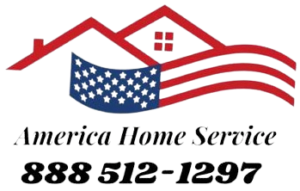-
Table of Contents
- Chimney Maintenance, Repair, and Cleaning
- Importance of Regular Chimney Maintenance
- Chimney Repair: Addressing Common Issues
- Chimney Cleaning and Creosote Removal
- Fireplace Safety Tips
- FAQ: Chimney Maintenance and Repair
- How often should I have my chimney inspected?
- What are the signs that my chimney needs repair?
- Can I clean my chimney myself?
- What is creosote, and why is it dangerous?
- Conclusion
Ready to take action? Follow our checklist and book your chimney repair.
Chimney Maintenance, Repair, and Cleaning

Ensuring your chimney is in top condition is crucial for both safety and efficiency. Regular chimney maintenance not only prevents potential hazards but also enhances the performance of your fireplace. This article will guide you through the essentials of chimney maintenance, repair, and cleaning, focusing on key aspects like chimney inspection, creosote removal, and fireplace safety.
Importance of Regular Chimney Maintenance
Regular chimney maintenance is vital for preventing dangerous situations such as chimney fires and carbon monoxide poisoning. A well-maintained chimney ensures that smoke and gases are properly vented out of your home, keeping your indoor air quality safe. Scheduling annual chimney inspections can help identify issues early, saving you from costly repairs in the future.
Chimney Repair: Addressing Common Issues
Over time, chimneys can develop structural issues such as cracks, leaks, and blockages. These problems can compromise the integrity of your chimney and pose safety risks. Professional chimney repair services can address these issues, ensuring your chimney functions efficiently. Common repairs include fixing mortar joints, replacing chimney caps, and repairing flue liners.
Chimney Cleaning and Creosote Removal
Creosote buildup is a major concern for chimney safety. This highly flammable substance can accumulate inside the chimney, increasing the risk of a chimney fire. Regular creosote removal is essential to maintain a safe and efficient fireplace. Professional chimney cleaning services use specialized tools to thoroughly clean the chimney, removing creosote and other debris.
Fireplace Safety Tips
Ensuring fireplace safety involves more than just maintaining the chimney. Here are some tips to keep your fireplace safe:
- Use seasoned wood to reduce creosote buildup.
- Install a chimney cap to prevent debris and animals from entering.
- Keep flammable materials away from the fireplace.
- Install smoke and carbon monoxide detectors in your home.
FAQ: Chimney Maintenance and Repair
How often should I have my chimney inspected?
It is recommended to have your chimney inspected at least once a year, especially before the start of the heating season.
What are the signs that my chimney needs repair?
Signs that your chimney may need repair include visible cracks, water leaks, and unusual odors coming from the fireplace.
Can I clean my chimney myself?
While some minor cleaning can be done by homeowners, it is best to hire a professional for thorough cleaning and creosote removal to ensure safety.
What is creosote, and why is it dangerous?
Creosote is a byproduct of burning wood that can accumulate in the chimney. It is highly flammable and can lead to chimney fires if not removed regularly.
Conclusion
Regular chimney maintenance, repair, and cleaning are essential for ensuring fireplace safety and efficiency. By scheduling annual inspections and addressing issues promptly, you can enjoy a safe and warm home environment. For professional services, consider exploring our air duct cleaning and dryer vent cleaning services to further enhance your home’s safety and efficiency.





